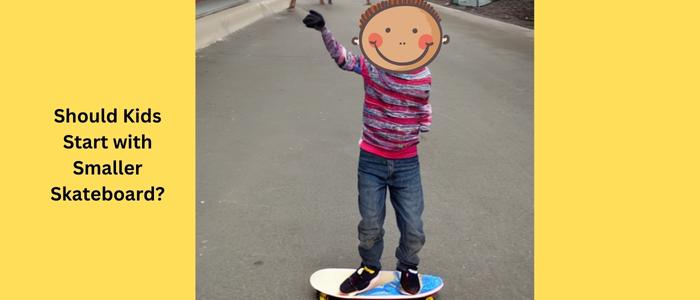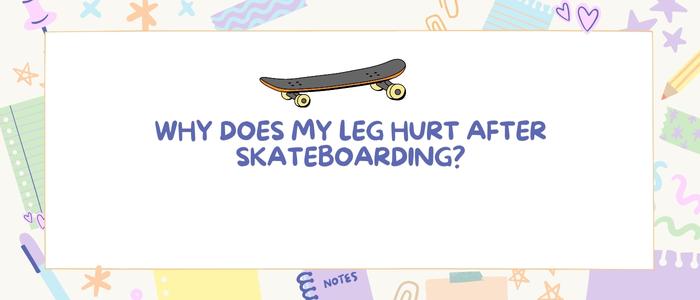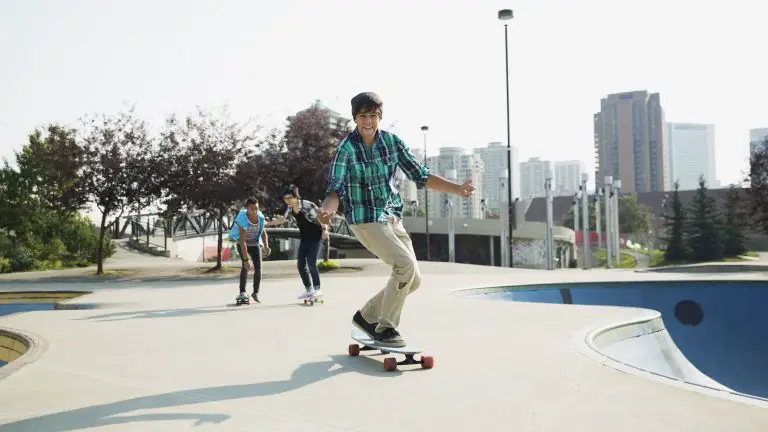Should Kids Start with Smaller Skateboard? [Real-Life Experience Included]
( If you purchase through our sponsored links, we may receive a small commission at no extra cost to you )
Skateboarding is a fun and exciting activity that can provide kids with a great way to get physical exercise, spend time outdoors, and express themselves creatively. However, like any physical activity, skateboarding can also carry some risks, and it is important for kids to be aware of these risks and take steps to stay safe.
One way to help kids stay safe while skateboarding is to encourage them to start with a smaller skateboard. Smaller skateboards are typically more lightweight and easier to maneuver, which can make it less likely for kids to fall and get injured while learning to skate. Smaller skateboards are also often designed with safety features, such as softer wheels and reinforced decks, that can provide additional protection for young skaters.
Benefits of Starting with a Smaller Skateboard
It is important for kids to start with smaller skateboards for several reasons.
First, smaller skateboards are typically more lightweight and easier to maneuver, which can help kids develop their balance and coordination. This can make it less likely for kids to fall and get injured while learning to skate.
Second, smaller skateboards are also often designed with safety features, such as softer wheels and reinforced decks, that can provide additional protection for young skaters. This can help kids to feel more confident and comfortable as they learn to ride.
Third, using a smaller skateboard can also help kids to develop their skills more quickly and effectively. Because smaller skateboards are easier to control, kids can focus on learning the fundamentals of skateboarding, such as how to push, turn, and stop, without worrying as much about maintaining their balance.
This can make it easier for kids to progress to more advanced tricks and techniques as they gain more experience.
Overall, starting with a smaller skateboard can help kids to enjoy skateboarding safely and confidently, while also providing a solid foundation for their future development as skaters.
Smaller Skateboard reduces the risk of Injuries and Accidents
First, smaller skateboards are typically more lightweight and easier to maneuver than larger skateboards. This can make it less likely for kids to fall and get injured while learning to skate, which is especially important for younger or less experienced skaters who may not have developed their balance and coordination as much as older or more experienced skaters.
Second, smaller skateboards are often designed with safety features that can provide additional protection for young skaters. For example, many smaller skateboards have softer wheels that are less likely to cause injuries if a skater falls on them, and some also have reinforced decks that are more durable and less likely to break or splinter. These safety features can help kids to feel more confident and comfortable as they learn to ride, which can in turn help to reduce the risk of accidents and injuries.
Third, using a smaller skateboard can also help kids to develop their skills more quickly and effectively. Because smaller skateboards are easier to control, kids can focus on learning the fundamentals of skateboarding, such as how to push, turn, and stop, without worrying as much about maintaining their balance. This can make it easier for kids to progress to more advanced tricks and techniques as they gain more experience, which can help them to avoid accidents and injuries that can occur when attempting more difficult maneuvers.
In addition to starting with a smaller skateboard, it is also important for kids to wear protective gear, such as a helmet, elbow and knee pads, and wrist guards, whenever they are skateboarding. This protective gear can help to reduce the risk of injuries if a skater falls or collides with other objects, and can provide an extra layer of protection against accidents and injuries.
Real Life Experience of skateboarding with Smaller Skateboard
The Ben family recently bought their 5-year-old son a small skateboard, and they have been very pleased with the results. From the moment he first started riding his new skateboard, their son’s skills improved quickly and he was able to master the basics of skateboarding in a short period of time.
One of the reasons for this rapid improvement was the fact that the small skateboard was much easier for their son to maneuver than a larger skateboard would have been. Because the skateboard was lightweight and easy to control, he was able to focus on developing his balance and coordination without worrying as much about falling and getting injured. This made it easier for him to learn the fundamentals of skateboarding, such as how to push, turn, and stop.
In addition to the size and weight of the skateboard, the Smith family was also impressed by the safety features that it included. The skateboard had softer wheels that were less likely to cause injuries if their son fell, and the deck was reinforced to make it more durable and less likely to break or splinter.
This added protection gave their son the confidence he needed to try more advanced tricks and techniques, which helped him to progress even more quickly.
Overall, the Smith family’s experience with their 5-year-old son’s small skateboard has been extremely positive. By providing their son with a skateboard that was easy to maneuver and included safety features, they were able to help him develop his skills quickly and confidently, which has made skateboarding a fun and enjoyable activity for the whole family.
Another Experience
My son Areeb, 8 years old, started skateboarding with a pennyboard. See the image below:

Wear Knee pads, Helmet and Elbow Pads when Skateboarding
Kids should always wear a helmet and knee pads when skateboarding, regardless of whether they are using a smaller or larger skateboard. This protective gear is essential for keeping kids safe and reducing the risk of injuries while skateboarding.
One of the most important pieces of protective gear for skateboarding is a helmet. A helmet can help to protect a skater’s head from impacts and falls, which can prevent serious head injuries and even save a skater’s life in the event of a serious accident. Helmets come in a variety of styles and sizes, so it is important for kids to find a helmet that fits properly and is comfortable to wear.
In addition to a helmet, elbow pads and knee pads are also essential pieces of protective gear for skateboarding. These pads help to protect a skater’s elbows and knees from impacts and abrasions, which can be especially important when skateboarding on rough or uneven surfaces. Like helmets, elbow and knee pads come in a variety of styles and sizes, so it is important for kids to find pads that fit properly and are comfortable to wear.
Overall, kids should always wear a helmet, elbow pads, and knee pads when skateboarding, regardless of whether they are using a smaller or larger skateboard. This protective gear is essential for keeping kids safe and reducing the risk of injuries while skateboarding. By wearing the appropriate protective gear, kids can enjoy skateboarding confidently and safely.
Conclusion
Overall, smaller skateboards can be an excellent choice for kids who are learning to skate. By making it easier for kids to develop their balance and coordination, providing additional protection against falls and collisions, and helping kids to learn the basics of skateboarding more quickly and effectively, smaller skateboards can help to reduce the risk of accidents and injuries for young skaters.



![When To Replace Skateboard Wheels [ 7 Must Noticeable Conditions]](https://sportstotry.com/wp-content/uploads/2021/12/when-to-replace-skateboard-wheels.jpg)


![Are Punisher Skateboards Good? [2 Best Punished Skateboards Analyzed]](https://sportstotry.com/wp-content/uploads/2022/01/punisher-skate.jpg)
